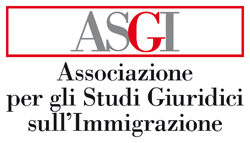di Fulvio Vassallo Paleologo
Abstract: Nel mese di febbraio del 2020, con un decreto del ministro delle infrastrutture e dei trasporti De Micheli allora in carica, è stato pubblicato il nuovo «Piano nazionale per la ricerca e il salvataggio in mare» . Nella parte introduttiva del Piano si fa espresso riferimento alle metodologie tecnico-operative contenute nel manuale IAMSAR, adottato dall’IMO nel 1999, ed alle principali Convenzioni internazionali di diritto del mare. Si stabilisce che l’obbligo giuridico del soccorso richiede una precisa responsabilità ed un impegno di coordinamento per le autorità statali. Il Piano dedica la maggior parte delle sue previsioni alle attività SAR nelle acque territoriali italiane, ma nella versione più recente ha ampliato le prescrizioni relative ad attività SAR in acque internazionali, anche con specifico riferimento ai fenomeni migratori. In questo commento tracceremo le linee fondamentali delle prassi operative previste dal nuovo Piano, con particolare riferimento alle attività di ricerca e soccorso in alto mare, alla luce del principio di gerarchia delle fonti stabilito dall’art. 117 della Costituzione e ribadito dalla Corte di cassazione nel caso Rackete. Si tratta di valutare le prescrizioni del nuovo Piano e le prassi corrispondenti in modo da garantire l’esercizio effettivo della giurisdizione ed il pieno rispetto delle Convenzioni internazionali di diritto marittimo e della Convenzione di Ginevra sui rifugiati.
Abstract: In February 2020, the new «National Plan for Search and Rescue at Sea» was published in a decree by the then Minister of Infrastructure and Transport, De Micheli. The introduction to the Plan makes express reference to the technical-operational methodologies contained in the IAMSAR handbook, adopted by the IMO in 1999, and to the main international conventions on the law of the sea. It establishes that the legal obligation of rescue requires a specific responsibility to be assigned, alongside a commitment to coordinate operations for state authorities. The Plan dedicates most of its provisions to SAR activities in Italian territorial waters, but its most recent version has expanded requirements regarding SAR activities in international waters, including specific references to the phenomenon of migration. This commentary will outline the basic guidelines of the operational practices provided for in the new Plan, with particular reference to search and rescue activities on the high seas, through the lens of the principle of the hierarchy of legal sources established by art. 117 of the Constitution and confirmed by the Court of cassation in the Rackete case. It is a matter of evaluating the requirements of the new Plan and its corresponding practices, in order to ensure the effective exercise of jurisdiction and full compliance with the international conventions of maritime law and the Geneva Convention on refugees.




